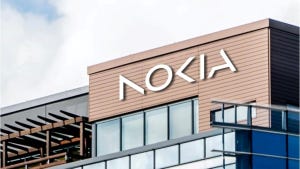Cisco's Core Router Goes Packet-Optical
The mirror image to P-OTS is a really big MPLS switch, and now Cisco can join Juniper in saying it's got one

Cisco is announcing Monday that it's adding an MPLS blade to the CRS-3 core router, taking on the recently announced Juniper PTX.
For both companies, it's a nod to the packet/optical convergence everybody is talking about. Optical networking vendors have focused on building packet-optical transport systems (P-OTS), but Cisco and Juniper are proposing a different direction, where packet-based traffic is transported through the core via a really big MPLS switch.
It's worth noting that Cisco does have a P-OTS in the Carrier Packet Transport System (CPT). But it seems likely Cisco will put more emphasis on the MPLS alternative, given that it's part of a flagship core router.
Why this matters
This helps clear up last year's questions about how these two router vendors would respond to the growing P-OTS market. While still supporting the Optical Transport Network (OTN) in spirit, their focus will be on this core MPLS switch, or label-switched router, or packet transport switch, or -- whatever you want to call it.
But Cisco is pulling as much as possible into one box, whereas Juniper's PTX is a separate system that's meant to sit alongside a T-series core router and an optical transport shelf (Juniper offers its own, a rebranded ADVA Optical Networking FSP 3000).
That's going to present some opportunities for one-upmanship. Cisco is already boasting about the benefits of integration. "You don't burn router ports going from a core router to a packet transport box" or an optical shelf, says Suraj Shetty, Cisco's vice president of service provider marketing.
One important factor for both companies is that this label-switched router represents a completely new market for the router vendors and might be the easier direction for packet/optical convergence, says Ray Mota, an analyst with ACG Research .
"I've always viewed that it's easier for the IP guys to get into optical" than the other way around, Mota says. "I see opportunity for both Cisco and Juniper. Optical is like a $12 billion market."
For more
Here's the latest on Cisco and Juniper's packet-optical plans.
OFC/NFOEC 2011: Juniper OEMs an ADVA Box
Juniper Makes Its Packet-Optical Move
Cisco (Finally) Adds P-OTS
— Craig Matsumoto, West Coast Editor, Light Reading
About the Author(s)
You May Also Like












